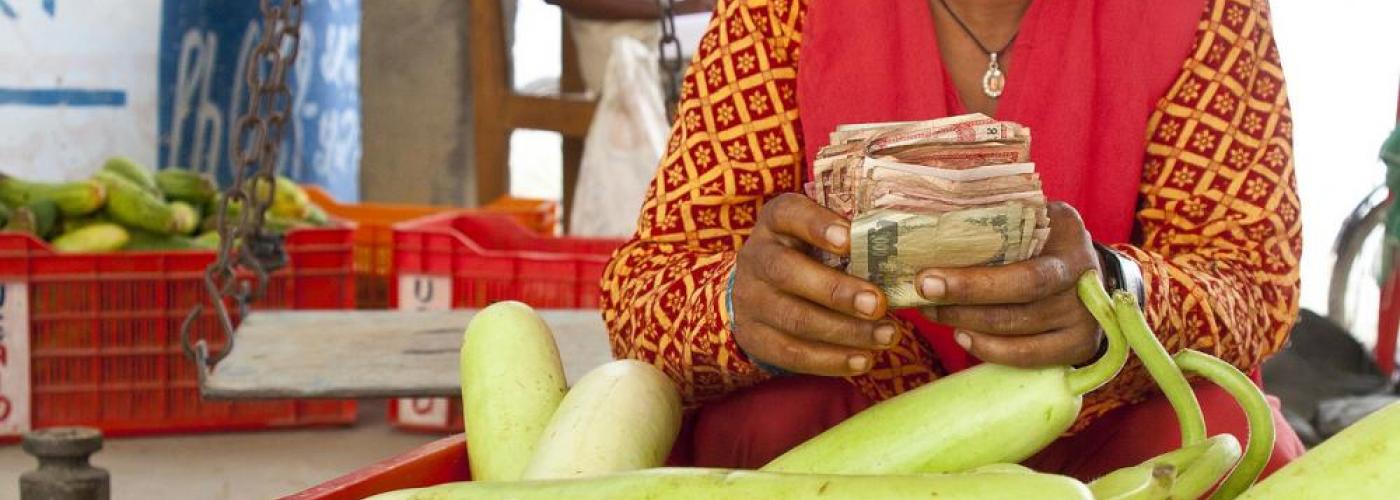Improving the Enabling Environment for Smallholder Finance: A Conversation with EEFS’ Nate Kline
Image

This Q&A with Nate Kline, Chief of Party of the Feed the Future Enabling Environment for Food Security project, is part of Agrilinks’ Mobilizing Finance for Food Security month. Visit the project’s activity page on Agrilinks to learn more. This was originally posted on Agrilinks, and was co-authored by April Thompson.
Agrilinks: Give me your elevator pitch on the Feed the Future Enabling Environment for Food Security mechanism.
Kline: Our project is a buy-in mechanism where USAID Missions can rapidly secure top analysis and technical assistance to create an enabling environment for agricultural market systems. Our teams of lawyers, economists and agriculture experts work closely with Missions and governments to facilitate multidisciplinary solutions to complex problems.
Agrilinks: Has the project done any research or analysis on the enabling environment for agricultural finance?
Kline: Yes. In fact, we are about to launch an assignment in West Africa looking at how certain regulations and institutions affect access to agricultural finance throughout market systems. Stay tuned!
Our work builds on compelling research that has demonstrated a clear and substantial link between good laws and access to finance. We look at agricultural finance from the perspective of the small farms and firms as well as the bank. Our approach looks at issues through four lenses:
- Do the economics of the enterprise/scheme make sense?
- Do options exist to derisk financing?
- How can we lower the transaction costs?
- How can we boost trust in repayment?
These questions, when unpacked, hit at many of the core issues affecting agricultural finance. The framework we use looks at the formal laws and rules, the quality and capacity for enforcement, and the social dynamics throughout the agricultural sector, which combined build understanding of the enabling environment aspects of these issues.
Agrilinks: The informal aspects of the enabling environment, such as societal norms and social dynamics, are sometimes underappreciated or not properly accounted for in addressing market issues. How would you say these factors play into the access and uptake of financial products and services for farming households?
Social dynamics have a huge role to play — too much to cover in a brief answer!
According to the World Bank financial inclusion data, women are 20 percent less likely than men to hold a bank account in developing countries and are 17 percent less likely to have accessed formal finance. This critical gap is often driven by social norms — an important priority considering the key role that women play in agriculture and food security.
Additionally, both women and men in the agricultural sector often face a perception problem, as agriculture is frequently treated as a poverty sector rather than an economic sector. This perception is striking and can lead to policy interventions — like debt forgiveness or other market interventions — that can have a chilling effect on finance.
With respect to uptake, unpacking the motivations and incentives that drive small farms and firm decisions is key. Small firms and farms have a reasonably low risk appetite; if they have a bad quarter, their family goes hungry. Where there are clear and demonstrable benefits, with low risk to the firm/farm, and when solutions are configured to what users really need, you see examples of rapid uptake, like the rapid uptake of mobile financial services for farmers.
Agrilinks: Where have you seen policy and laws take effect that have improved the enabling environment for agricultural finance, notably for the smallholder?
Empirical data in this space continues to grow, particularly with respect to smallholders. And it takes time to see results. Laws and regulations may be passed quickly, but it takes time to build institutions and to change norms and behaviors.
Good examples are out there. One from Ghana comes to mind from an AgCLIR assessment we conducted last year. Ghana created the framework for Africa’s first movable collateral registry in 2008. Over its first four years, the majority of loans with collateral registered at the facility were issued to women. In the first six months of 2012, 22,000 loans were at least partly collateralized using movable property. Other research has demonstrated that smaller firms tend to benefit more from movable collateral registries than larger firms.
Agrilinks: Are there any underappreciated dimensions of this issue of finance and the enabling environment you’d like to highlight?
Kline: There has been a renewed emphasis on unlocking deeper pools of international equity finance, which has an important role to play. Foreign direct investment (FDI) can be significant and transformative. But FDI pools are dwarfed by the size and scale of local investment. It isn’t even close. There is an important role for innovative financial products, but transformative development — the kind that ends the need for development assistance — also needs to focus on creating an enabling environment that allows farms and firms to unlock more of their existing investment by addressing the fundamentals: property, contracts, and trust.
April Thompson is the Knowledge Management Portfolio Manager for the Feed the Future Knowledge Driven Agriculture Development Project.


